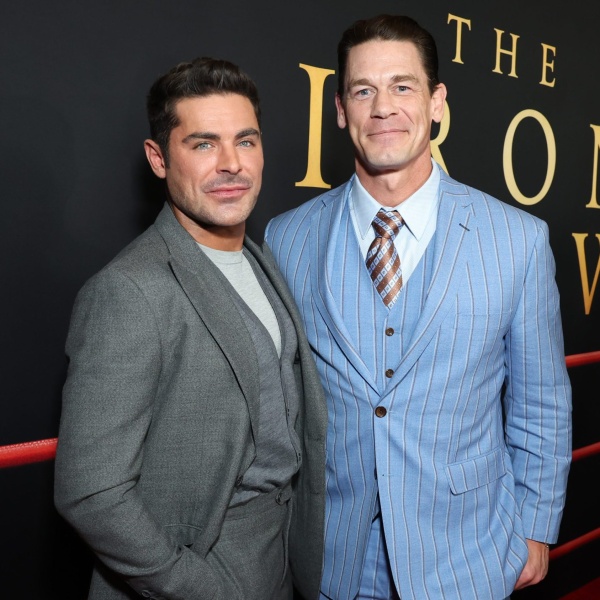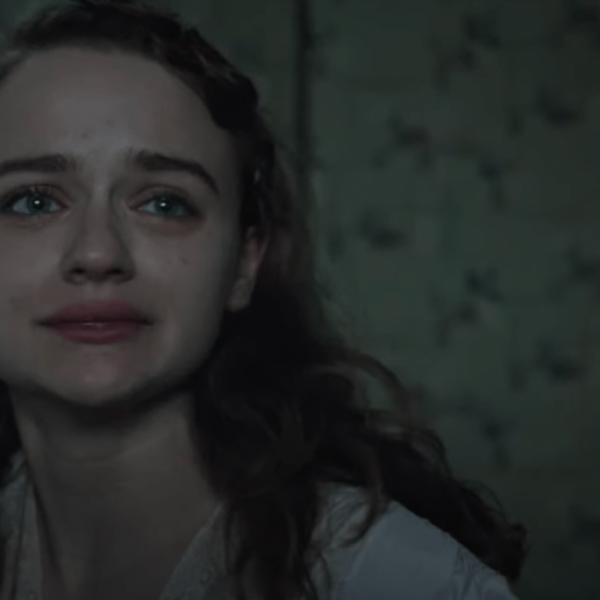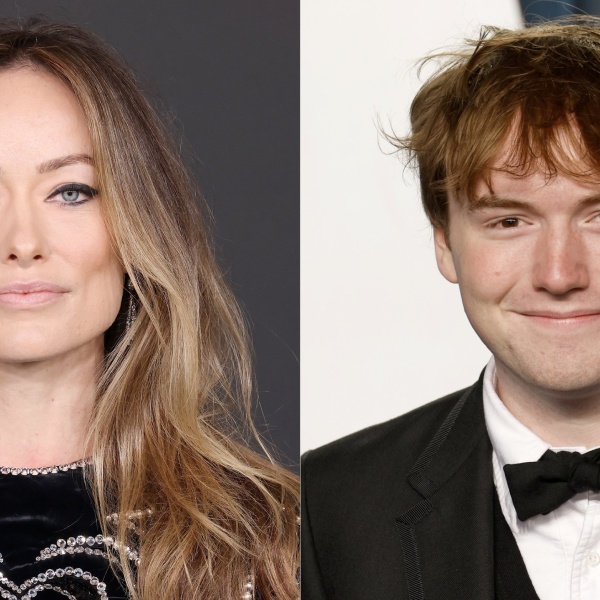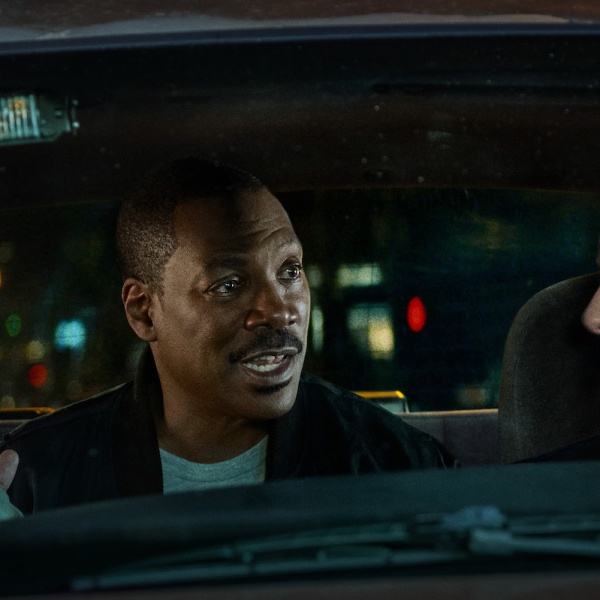Actor Talks Becoming ‘Blue’, The Sweet Nature of Forgiving Girls, And Clooney’s ‘Ides of March’

A couple of weeks ago, we attended the press day for “Blue Valentine,” Derek Cianfrance‘s searing emotional drama about a relationship beginning and ending and all the passion and toxicity in between. This was the day before the appeal (led by Harvey Weinstein and a team of what we can assume were well-tailored lawyers) that would overturn the movie’s NC-17 rating, an appeal that the director and two leads (Ryan Gosling and Michelle Williams) were ready to fight for, as they also saw the high rating as unwarranted. “I have questions about it, I don’t really understand it,” Gosling said, giving examples of sexually explicit films that were allowed to keep their R rating, he wondered, “why is it that sex by way of violence is entertainment but sex by way of love is pornographic?” His take on the scenes in question? “It was really important to us that those scenes be right, that they not feel sensationalized, like people trying to be sexy. It was a scene of two people who loved each other and were tired of talking about it and wanted to show one another.”
Our coverage of what his co-star Michelle Williams and director Derek Cianfrance had to say can be found here. More from Gosling after the jump.

It should be noted that throughout the roundtable, as well as during our discussion with the actor in solo mode, Ryan Gosling was donning leather gloves. His response to questions about the less-than-subtle accessories was simply: “Haters give me strength,” he smiled. A good summation of Gosling and his fearlessness, especially when it comes to the raw emotionality of “Blue Valentine.” “Not to be ambiguous, but I really think what’s special about the movie is it’s not pretending to have any answers,” he stressed. “It doesn’t pretend to know anything, it just really genuinely, we’re trying to ask a question. What happens to love? Where does it go? How is it that you can be so in love and then years later you’re trying to kill each other? Why is it that that happens? We tried to treat the film as a whodunnit.”
The actors took a month off in between sections of the movie. The first section, a euphoric beginning to a young relationship, the second, six years later as the couple tries to sort through a tattered marriage — a transition that was difficult to come back to. “I’m sure it’s like the fourth quarter of the Super Bowl, you know? It hurts and it’s hard but that’s what you’re there for. You came there for that, so it’s hard to hate it for happening,” he said. The time change required a physical transformation for the actor as well, including thinning his hair back and putting on weight, not his favorite task in the whole world. “It’s not great, you know. But girls are forgiving,” he chuckled, “so if I ever had any ego concerns, I’d just go to some restaurant and some lady would tell me I looked better with less hair, or that I looked better with some meat on my bones. Girls are sweet like that.”
But the marathon that was pre-production for the film (Cianfrance struggled in development hell for years before ‘Valentine’ finally went in front of cameras), allotted Gosling and Williams the time to prepare for such transitions, and learn how to, in a sense, become the characters they’d be playing. “I never had that experience before… where reality and fantasy were so blurred, you know? [Normally] You’re constantly being reminded that you’re making a movie,” Gosling said of the process which can difficult to lose yourself in. “You have marks, you have lights, you have trailers, you have the sides and everyone knows your lines, there’s monitors, traditional ways of doing coverage, you do a wide shot, you do a closer shot, you end with the close up. This, there was no evidence of any of that on this. [Cianfrance] comes from a documentary background so he, we, created these characters and lived as them and then he documented it.”
“And this is what’s interesting about Derek and his philosophy,” he continued, recalling the energy of living in the skin of the characters. “Everything was one take in the past, so when things are happening for the audience for the first time, they’re happening for us for the first time and there are no do-over’s. Everything that happened in the present we did many takes. In the shower we were almost there for a day and a half and he knew that. He said even if you get the shower scene in the first take we’re doing it all day so just know that. The idea was that you know when you’re first meeting someone you can hide behind these persona’s you create for yourselves, but when you really live with somebody you can’t hide anymore, and so you know fifty takes will break down any kind of artifices that you have and you’re just exposed.”
The documentary style is also a familiar one for cinematographer Andrij Parekh, who Gosling had worked with previously on “Half Nelson.” “It’s funny, I remember doing a scene with him, you know I thought I was really nailing it and he, halfway through, he just turned around and left, left me and started filming some of the kids and I was like, what is this guy doing? And then I went home and watched the dailies and there was a girl trying to stick a pencil up her nose and so he was like, well we have to get that and I agree.”

“He actually shoots with one eye open, which is kind of weird, it’s off putting if you look at it, while he’s doing it, but he comes from a documentary background too so [Cianfrance and Parekh] are always trying to catch what else it happening… Then I got used to it and I sort of forgot about [the camera]. In the latter part of the film they shot on really long lenses from really far away, so there were times when I didn’t even, you know, they were shooting all the time, I fell asleep in the middle of one take, I woke up a few hours later and they were still filming, you know? [Cianfrance] waited 12 years to make this movie, he wasn’t going to let anything pass him by.” But the level of improvisation that this type of filming required didn’t intimidate Gosling, in fact the methodology was right up his alley. “I can’t remember my lines anyway,” he confessed with a laugh. “So for me it was a dream come true, because I’m always trying to explain why I’m not saying the lines in other films, so for this it was a relief because that’s what he was asking us to do.”
As a side project, the actor has also been recording with his band Dead Man’s Bones, a process that has informed his acting and vice versa. “Yeah. I thank God for music. It’s made me a better actor. I think acting has made me a better musician,” he said. “Now, I come into a scene and I think ‘this guy’s playing the beat.’ You’re trying to figure out what the other actors are doing in terms of, like, Michelle’s got the baseline on this. And this guy’s playing the drums. And this person wants the guitar solo on this song, so I’ll just play some synth line. You have to figure out what your part is in the dynamic. So you’re filling in a space. You’re not all trying to be the lead singer.”
A philosophy that will surely come in handy on upcoming project, “Ides of March,” which will feature a large cast of heavy-hitters. “The character I’m playing is the head of the campaign, publicity, for George [Clooney]‘s character, the Democratic candidate for the primaries. So I’m working directly with Phillip Seymour Hoffman and Paul Giamatti and George and Evan Rachel Wood, Marisa Tomei, Geoffrey Wright. And Clooney’s directing.” A promising proposal for sure.
And the gloves? They remain a mystery, but are perhaps a part of his current project, “Drive,” which he talked to us about here and has seen a rough cut of: “I’m very anxious to see what people think. It’s crazy.”
“Blue Valentine,” now rated R, hits theaters in limited release today, December 29, and will expand in the weeks that follow. -Interview conducted by Drew Taylor, reporting by Leah Zak




